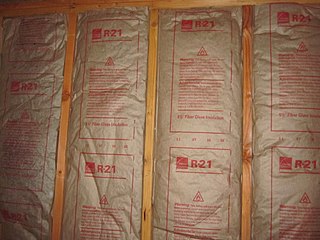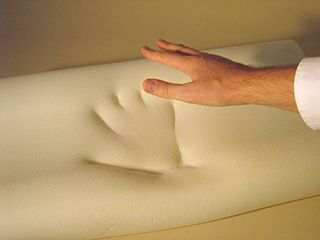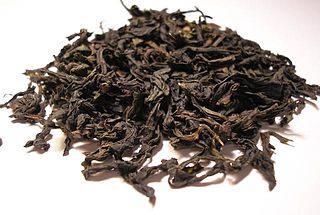Related Research Articles

Mahjong or mah-jongg is a tile-based game that was developed in the 19th century in China and has spread throughout the world since the early 20th century. It is played by four players. The game and its regional variants are widely played throughout East and Southeast Asia and have also become popular in Western countries. The game has also been adapted into a widespread online entertainment. Similar to the Western card game rummy, mahjong is a game of skill, strategy, and luck. To distinguish it from mahjong solitaire, it is sometimes referred to as mahjong rummy.

A roof is the top covering of a building, including all materials and constructions necessary to support it on the walls of the building or on uprights, providing protection against rain, snow, sunlight, extremes of temperature, and wind. A roof is part of the building envelope.

Thermal insulation is the reduction of heat transfer between objects in thermal contact or in range of radiative influence. Thermal insulation can be achieved with specially engineered methods or processes, as well as with suitable object shapes and materials.
Flooring is the general term for a permanent covering of a floor, or for the work of installing such a floor covering. Floor covering is a term to generically describe any finish material applied over a floor structure to provide a walking surface. Both terms are used interchangeably but floor covering refers more to loose-laid materials.
In engineering, a heat shield is a component designed to protect an object or a human operator from being burnt or overheated by dissipating, reflecting, and/or absorbing heat. The term is most often used in reference to exhaust heat management and to systems for dissipating frictional heat. Heat shields are used most commonly in automotive and aerospace.

In the context of construction, the R-value is a measure of how well a two-dimensional barrier, such as a layer of insulation, a window or a complete wall or ceiling, resists the conductive flow of heat. R-value is the temperature difference per unit of heat flux needed to sustain one unit of heat flux between the warmer surface and colder surface of a barrier under steady-state conditions. The measure is therefore equally relevant for lowering energy bills for heating in the winter, for cooling in the summer, and for general comfort.

Mahjong tiles are tiles of Chinese origin that are used to play mahjong as well as mahjong solitaire and other games. Although they are most commonly tiles, they may refer to playing cards with similar contents as well.

A pillow is a support of the body at rest for comfort, therapy, or decoration. Pillows are used in different variations by many species, including humans. Some types of pillows include throw pillows, body pillows, decorative pillows, and many more. Pillows that aid sleeping are a form of bedding that supports the head and neck. Other types of pillows are designed to support the body when lying down or sitting. There are also pillows that consider human body shape for increased comfort during sleep. Decorative pillows used on beds, couches or chairs are sometimes referred to as cushions.

A mattress is a large, usually rectangular pad for supporting a lying person. It is designed to be used as a bed, or on a bed frame as part of a bed. Mattresses may consist of a quilted or similarly fastened case, usually of heavy cloth, containing materials such as hair, straw, cotton, foam rubber, or a framework of metal springs. Mattresses may also be filled with air or water.

Memory foam consists mainly of polyurethane with additional chemicals that increase its viscosity and density. It is often referred to as "viscoelastic" polyurethane foam, or low-resilience polyurethane foam (LRPu). The foam bubbles or ‘cells’ are open, effectively creating a matrix through which air can move. Higher-density memory foam softens in reaction to body heat, allowing it to mold to a warm body in a few minutes. Newer foams may recover their original shape more quickly.

In materials science, a metal foam is a material or structure consisting of a solid metal with gas-filled pores comprising a large portion of the volume. The pores can be sealed or interconnected. The defining characteristic of metal foams is a high porosity: typically only 5–25% of the volume is the base metal. The strength of the material is due to the square–cube law.

Da Hong Pao is a Wuyi rock tea grown in the Wuyi Mountains of Fujian Province, China. Da Hong Pao has a unique orchid fragrance and a long-lasting sweet aftertaste. Dry Da Hong Pao has a shape like tightly knotted ropes or slightly twisted strips, and is green and brown in color. After brewing, the tea is orange-yellow, bright, and clear. Da Hong Pao can retain its flavor for nine steepings. The tea is often known to be extremely expensive.

In geometry, the trihexagonal tiling is one of 11 uniform tilings of the Euclidean plane by regular polygons. It consists of equilateral triangles and regular hexagons, arranged so that each hexagon is surrounded by triangles and vice versa. The name derives from the fact that it combines a regular hexagonal tiling and a regular triangular tiling. Two hexagons and two triangles alternate around each vertex, and its edges form an infinite arrangement of lines. Its dual is the rhombille tiling.

A masonry heater is a device for warming an interior space through radiant heating, by capturing the heat from periodic burning of fuel, and then radiating the heat at a fairly constant temperature for a long period. Masonry heaters covered in tile are called cocklestoves. The technology has existed in different forms, from back into the Neoglacial and Neolithic periods. Archaeological digs have revealed excavations of ancient inhabitants utilizing hot smoke from fires in their subterranean dwellings, to radiate into the living spaces. These early forms have evolved into modern systems.

Nonwoven fabric or non-woven fabric is a fabric-like material made from staple fibre (short) and long fibres, bonded together by chemical, mechanical, heat or solvent treatment. The term is used in the textile manufacturing industry to denote fabrics, such as felt, which are neither woven nor knitted. Some non-woven materials lack sufficient strength unless densified or reinforced by a backing. In recent years, non-wovens have become an alternative to polyurethane foam.

A bamboo wife is a bolster (pillow) made from a woven bamboo cylinder that may be as large as the size of the human body. It goes by names such as, also known as a Dutch wife, in Tagalog as kawil ; in Burmese as ဖက်လုံး and in Indonesian as guling.

A bolster is a long narrow pillow or cushion filled with cotton, down or fibre. Bolsters are usually firm for back or arm support or for decorative application. They are not a standard size or shape and commonly have a zipper or hook-and-loop enclosure. A foam insert is sometimes used for additional support. A bolster is also referred to as a cushion, a pillow and a prop. A bolster pillow is a common shape for lace pillows.

A bed base, sometimes called a foundation, is the part of a bed that supports the mattress. The bed base can itself be held in place and framed by the bedstead. In the United States, box-spring bed bases are very common. In Europe, sprung slats are much more common.

Liangmao, also known as Hakka hat and Hakka bamboo hat, is a traditional bamboo and/or straw hat worn by the Hakka people who perform manual work, such as farming and fishing. Hakka women wore it when working in the fields. The liangmao is made and is most commonly worn by the Hakka people who were originally from Northern China. The liangmao is a typical symbol of Hakka culture and is a "unique feature of Hakka culture"; it is also the "most public symbol associated with the Hakka". Some Hakka women still wear the liangmao when working outdoors nowadays. It also worn by non-Hakka women who work outdoors.
A Cambodian mat also known as a kantael is a woven mat made from palm or reed in Cambodia. The Cambodian mat consists of an ordinary mat, below which are fixed pads of strongly packed cotton, with the help of a special loom. They are specific to the Khmer people.
References
- ↑ "Chinese Dictionary: Practice Writing & Character Memorization by Inputting English, Pinyin, Or Chinese!". dictionary.writtenchinese.com. Retrieved August 25, 2022.
- ↑ 梁德潤; Liang, Derun; 鄭建德 (2003). 中大漢英詞典 (in Chinese). Chinese University Press. p. 465. ISBN 978-962-996-093-3.
- ↑ Meadows, Thomas Taylor (1856). The Chinese and their rebellions viewed in connection with their ... philosophy, ethics, legislation and administration. To which is added an essay on civilization. p. 303.
- ↑ Wright, Edward Reynolds; Pae, Man-sil (1984). Korean Furniture: Elegance and Tradition. Kodansha International. p. 94. ISBN 978-0-87011-652-0.
- ↑ China's Country Report on Forestry. Forestry Policy and Planning Division. 1997. p. 64.
- ↑ Kahn, Matthew E.; Zheng, Siqi (July 16, 2019). Blue Skies Over Beijing: Economic Growth and the Environment in China. Princeton University Press. p. 56. ISBN 978-0-691-19281-9.
- ↑ Zhaohua, Zhu; Wei, Jin (February 7, 2018). Sustainable Bamboo Development. CABI. p. 143. ISBN 978-1-78639-401-9.
- ↑ Zhaohua, Zhu; Wei, Jin (February 7, 2018). Sustainable Bamboo Development. CABI. p. 136. ISBN 978-1-78639-401-9.
- ↑ Hore, Jeanie (February 5, 2013). A Hore in China. Colibri Editions. p. 201. ISBN 978-1-4797-4424-4.
- ↑ 习惯老哥 (June 4, 2017). "凉席选购指南 | 夏天凉席哪种好_凉席材质介绍_什么值得买". post.smzdm.com (in Chinese). Retrieved August 25, 2022.
- ↑ "凉席哪种好?凉席有哪些?". 知乎专栏 (in Chinese). Retrieved August 25, 2022.